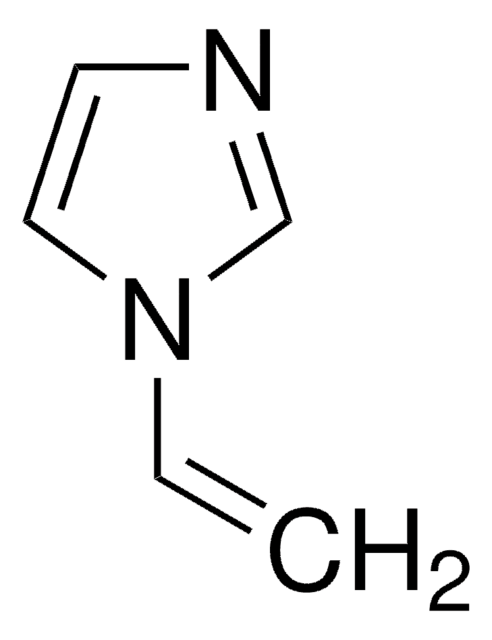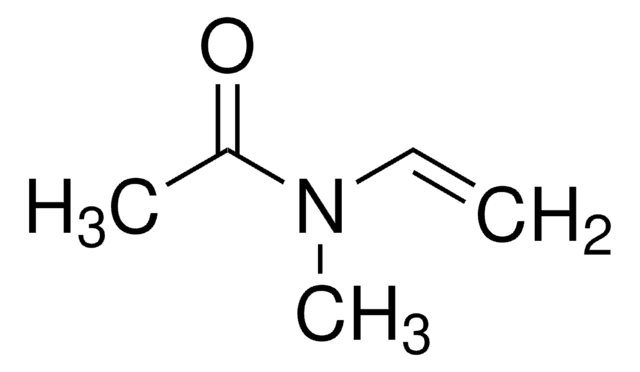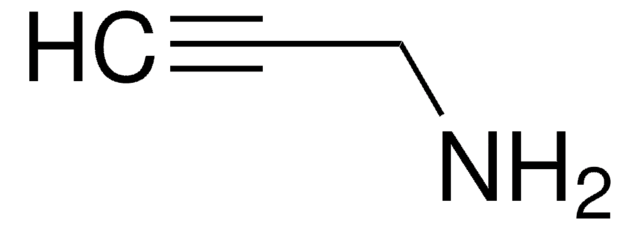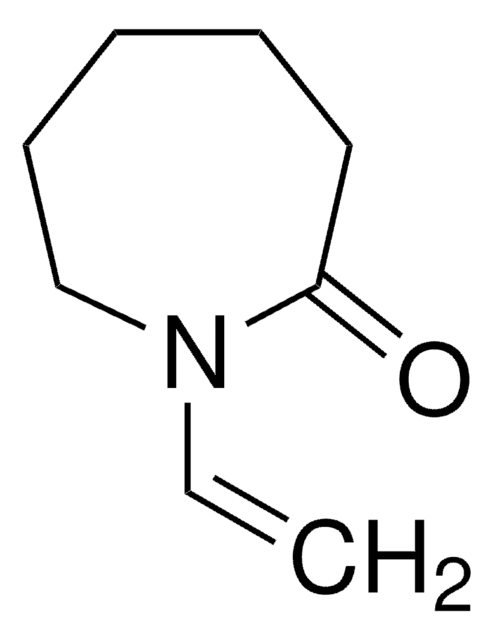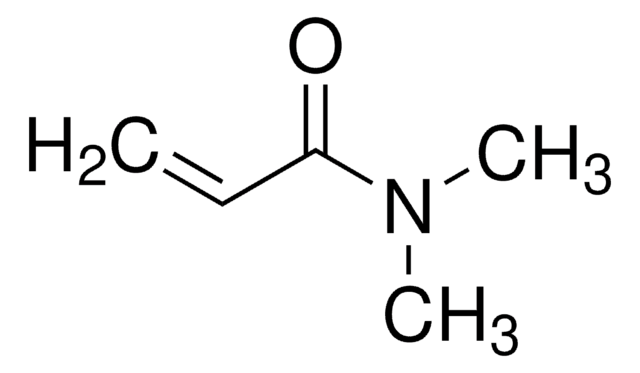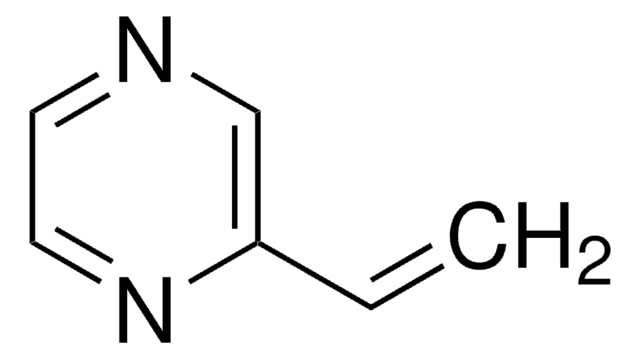447331
N-Vinylformamide
98%
Sinonimo/i:
N-Ethenylformamide, N-VFA, N-Vinyl-N-formylmethanamine
About This Item
Prodotti consigliati
Tensione di vapore
~0.1 mmHg ( 25 °C)
Livello qualitativo
Saggio
98%
contiene
25-55 ppm 4-Hydroxy-TEMPO as stabilizer
Indice di rifrazione
n20/D 1.494 (lit.)
P. ebollizione
210 °C (lit.)
Punto di fusione
−16 °C (lit.)
Densità
1.014 g/mL at 25 °C (lit.)
Temperatura di conservazione
2-8°C
Stringa SMILE
[H]C(=O)NC=C
InChI
1S/C3H5NO/c1-2-4-3-5/h2-3H,1H2,(H,4,5)
ZQXSMRAEXCEDJD-UHFFFAOYSA-N
Descrizione generale
Applicazioni
- As a monomer to synthesize poly (N-vinylformamide) (PNVF) based hydrogels that can be used for controlled drug delivery.
- To synthesize an aqueous binder for Li4Ti5O12(LTO) anodes in lithium-ion batteries. This helps to enhance the stability and specific capacity of the electrodes.
- To fabricate biocompatible coating for medical devices.
- To fabricate polypropylene membranes for continuous removal of organic micropollutants from water. N-vinylformamide enhances the adsorption affinity of the membrane by inducing multiple hydrophilic and hydrogen bonding sites on the surface.
Avvertenze
Danger
Indicazioni di pericolo
Consigli di prudenza
Classi di pericolo
Acute Tox. 4 Oral - Carc. 2 - Eye Dam. 1 - Repr. 1B - Skin Irrit. 2 - STOT SE 3
Organi bersaglio
Respiratory system
Codice della classe di stoccaggio
6.1C - Combustible acute toxic Cat.3 / toxic compounds or compounds which causing chronic effects
Classe di pericolosità dell'acqua (WGK)
WGK 1
Punto d’infiammabilità (°F)
215.6 °F
Punto d’infiammabilità (°C)
102 °C
Scegli una delle versioni più recenti:
Possiedi già questo prodotto?
I documenti relativi ai prodotti acquistati recentemente sono disponibili nell’Archivio dei documenti.
I clienti hanno visto anche
Il team dei nostri ricercatori vanta grande esperienza in tutte le aree della ricerca quali Life Science, scienza dei materiali, sintesi chimica, cromatografia, discipline analitiche, ecc..
Contatta l'Assistenza Tecnica.